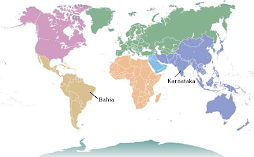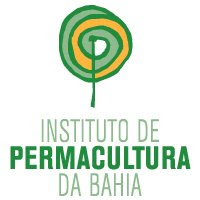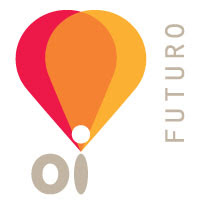Intercâmbio virtual entre agricultoresdo
semi-árido da Bahia e da Índia
8ª Videoconferência Umburanas - BA
Data: 07/08/2009
Tema: Sistemas Integrado de Produção
sexta-feira, 21 de agosto de 2009
8ª Videoconferência Umburanas - BA Parte 01
Intercâmbio virtual entre agricultoresdo
semi-árido da Bahia e da Índia
8ª Videoconferência Umburanas - BA
Data: 07/08/2009
Tema: Sistemas Integrado de Produção
semi-árido da Bahia e da Índia
8ª Videoconferência Umburanas - BA
Data: 07/08/2009
Tema: Sistemas Integrado de Produção
terça-feira, 18 de agosto de 2009
7ª Videoconferencia de Cafarnaum - BA - Parte 01
Intercâmbio virtual entre agricultoresdo
semi-árido da Bahia e da Índia
7ª VideoconferênciaCafarnaum - BA
Data: 08/08/2009
Tema: Sistemas Integrado de Produção
semi-árido da Bahia e da Índia
7ª VideoconferênciaCafarnaum - BA
Data: 08/08/2009
Tema: Sistemas Integrado de Produção
7ª Video Conferencia de Cafarnaum - BA - Parte 02
Intercâmbio virtual entre agricultores
do semi-árido da Bahia e da Índia
7ª Videoconferência Cafarnaum - BA - 08/08/2009
Tema: Sistemas Integrado de Produção
do semi-árido da Bahia e da Índia
7ª Videoconferência Cafarnaum - BA - 08/08/2009
Tema: Sistemas Integrado de Produção
terça-feira, 11 de agosto de 2009
O sisal
O Sisal no Campo do Sr. Airo Souza Gois
Lagadiço de Cafarnaum - BA.
The Agave
Agave in the property of Mr. Airo Souza Gois
Lagadiço Community - Cafarnaum - Bahia - Brazil
Translation of the video
My name is Airo Souza Gois, I am a policulture farmer, I live in the municipality of Cafarnaum. I was born and raised in Cafarnaum. I have been a policulture farmer since 5 years ago. Here is my property, where the agave is planted. This agave is about 2 years old. This agave is for sandy soil. It grows in any soil, but in sandy soil it develops much better. The agave is also good for animals such as cows and also for bees in our region. It is very useful in the semi-arid. It can also be used to cover the soil. This is a sustainable way we have nowadays. Here, between rows we plant 2,20 meters and between plants, about 1 meter. This agave is not very beautiful because this year, it rained very little here. When it rains about 400 millimeters in a year, the agave becomes very beautiful. Next year, we will probably cut (harvest) part of it to extract the fibers and sell.
Lagadiço de Cafarnaum - BA.
The Agave
Agave in the property of Mr. Airo Souza Gois
Lagadiço Community - Cafarnaum - Bahia - Brazil
Translation of the video
My name is Airo Souza Gois, I am a policulture farmer, I live in the municipality of Cafarnaum. I was born and raised in Cafarnaum. I have been a policulture farmer since 5 years ago. Here is my property, where the agave is planted. This agave is about 2 years old. This agave is for sandy soil. It grows in any soil, but in sandy soil it develops much better. The agave is also good for animals such as cows and also for bees in our region. It is very useful in the semi-arid. It can also be used to cover the soil. This is a sustainable way we have nowadays. Here, between rows we plant 2,20 meters and between plants, about 1 meter. This agave is not very beautiful because this year, it rained very little here. When it rains about 400 millimeters in a year, the agave becomes very beautiful. Next year, we will probably cut (harvest) part of it to extract the fibers and sell.
sábado, 8 de agosto de 2009
Impactos dos agrotóxicos nas lavouras do sertão
O agricultor Osmar Ramos de Souza testemunha os impactos negativos no plantio de feijão provocados pelo uso intensivo de agrotóxicos nas lavouras de tomate da região de Cafarnaum, no centro-norte da Bahia.
Impacts of pesticides on the crops
The farmer Osmar Ramos de Souza testifies about the negative impacts on beans crops caused by intensive use of pesticides in tomato crops in the region of Cafarnaum, Bahia, Brazil.
Translation of the video
Title: Impacts of pesticides in the countryside crops: Osmar Ramos’ statement – Cafarnaum, July 2009.
Good morning! My name is Osmar. I’m a farmer and I practice policulture. I live in a community called Lapa Cercada, in the municipality of Cafarnaum, but I work in a community called Barauna. We have been noticing the difficulties in this region. After the tomato crops started, in the rainy season, when the rain “prepares” itself, it prepares in the North and West. The wind shows when the rain will come. The wind blows from there and the pesticide odor accompanies it. When we plant beans here, the plague spreads out. In the past, two good rains we had beans for all year long. But nowadays, the changes that have been happening… the tomato and other “irrigation”… when the rain forms and the wind blows, the pesticide odor comes with it. I have planted beans some times and when we notice, the pesticide is all over and there is no chance to save the crop. Only God knows the way we can live in this Northeast!
Impacts of pesticides on the crops
The farmer Osmar Ramos de Souza testifies about the negative impacts on beans crops caused by intensive use of pesticides in tomato crops in the region of Cafarnaum, Bahia, Brazil.
Translation of the video
Title: Impacts of pesticides in the countryside crops: Osmar Ramos’ statement – Cafarnaum, July 2009.
Good morning! My name is Osmar. I’m a farmer and I practice policulture. I live in a community called Lapa Cercada, in the municipality of Cafarnaum, but I work in a community called Barauna. We have been noticing the difficulties in this region. After the tomato crops started, in the rainy season, when the rain “prepares” itself, it prepares in the North and West. The wind shows when the rain will come. The wind blows from there and the pesticide odor accompanies it. When we plant beans here, the plague spreads out. In the past, two good rains we had beans for all year long. But nowadays, the changes that have been happening… the tomato and other “irrigation”… when the rain forms and the wind blows, the pesticide odor comes with it. I have planted beans some times and when we notice, the pesticide is all over and there is no chance to save the crop. Only God knows the way we can live in this Northeast!
Marcadores:
agrotóxicos,
Cafarnaum,
feijão,
tomate
Assinar:
Postagens (Atom)



